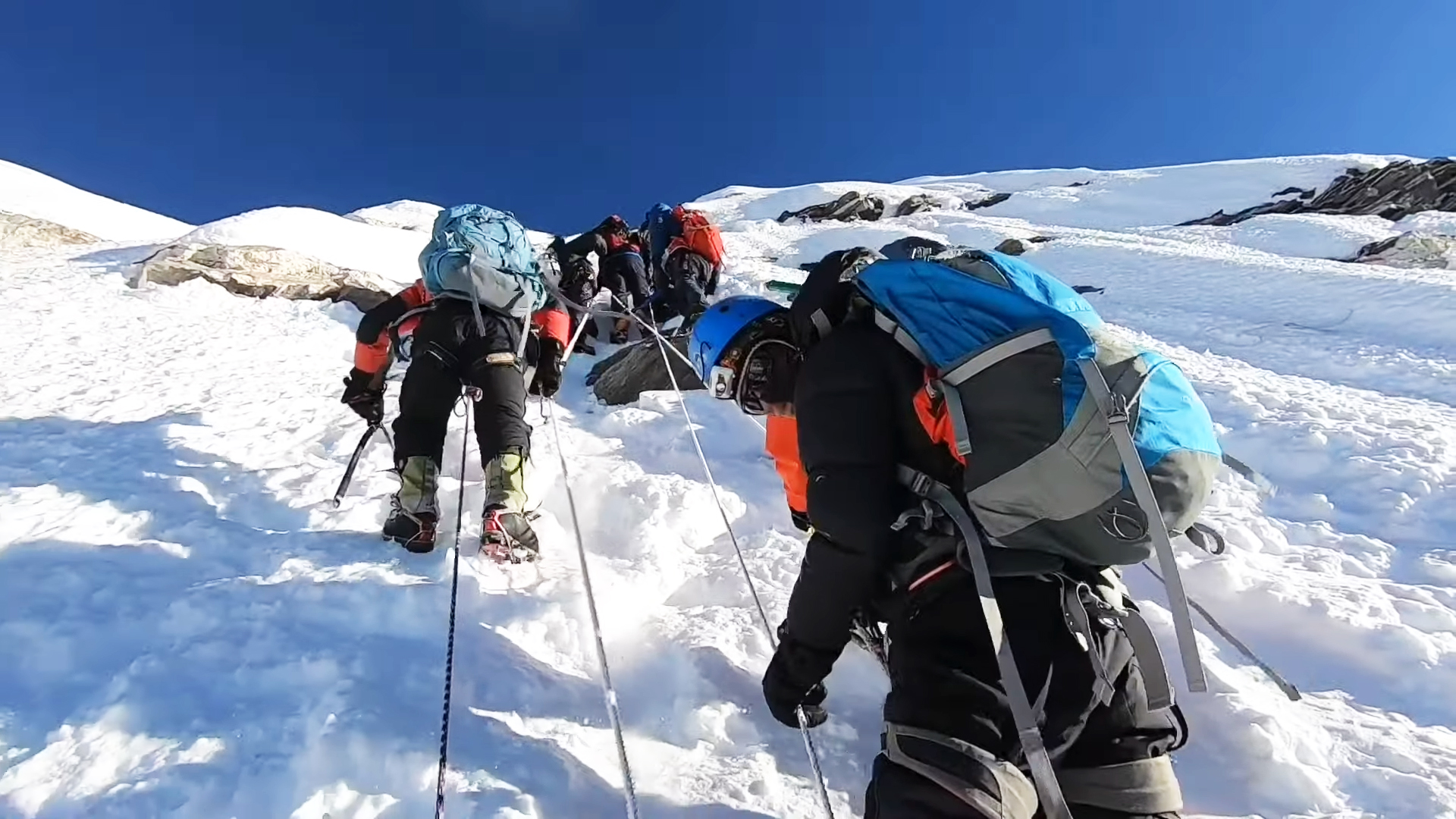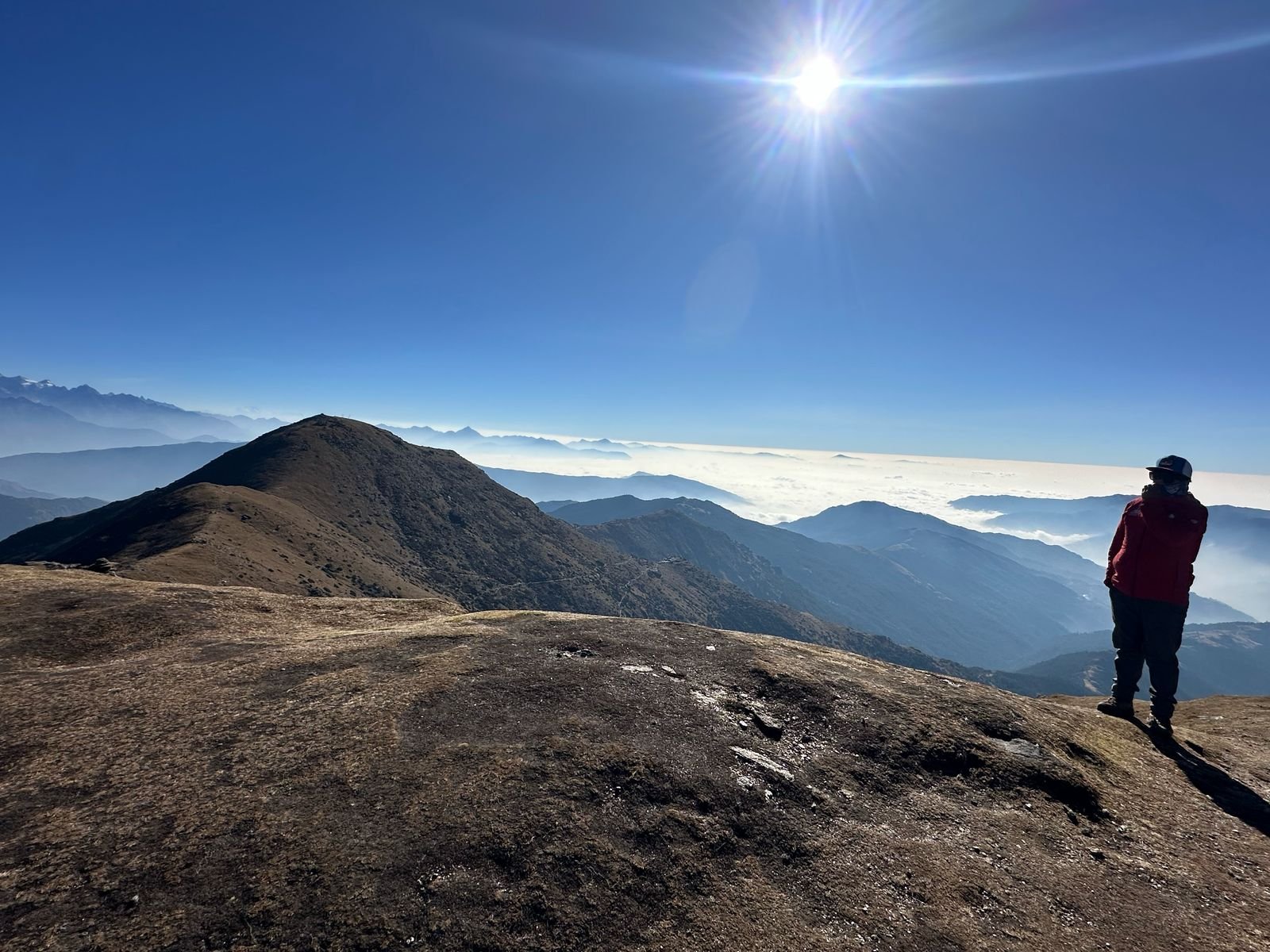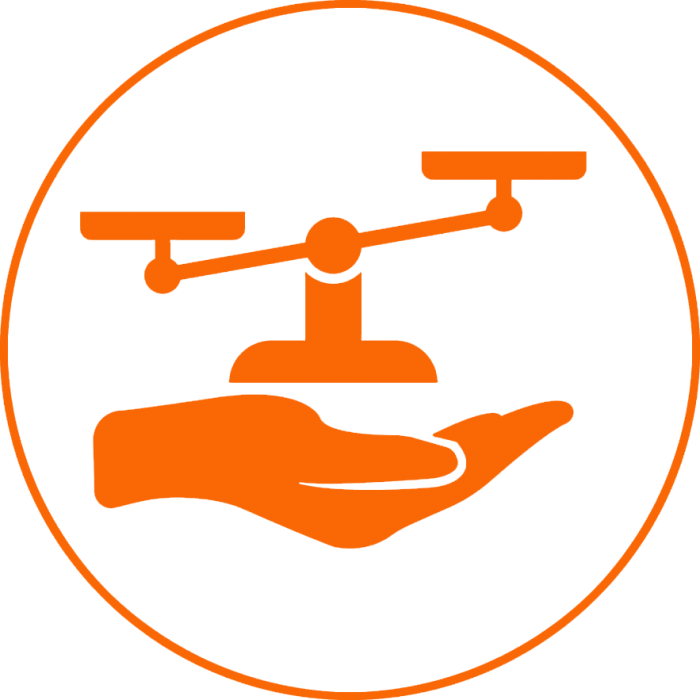5 Best Climbing Peaks in Nepal

Introduction to 5 Best Climbing Peaks in Nepal
In this article, we try to understand in detail the 5 best climbing peaks in Nepal. Nepal is home to many magnificent and breathtaking Himalayan beauties. Nepal is famous all over the world as the country of the Himalayas. This country is home to 8 high mountains over 8000 meters, including the highest mountain on earth, Mount Everest.
Peaks that are less than 7000 meters above sea level are climbing peaks. These climbing peaks in Nepal attract climbers who want to practice before climbing the higher mountains.
Nepal’s majestic snow-capped peaks offer thrills to peak climbers and mountaineering enthusiasts. If you want to do a more adventurous and exciting activity than trekking in the Himalayas, then climbing Peaks in Nepal is the best option.
You can find many small to high mountains here. So, Nepal is an excellent destination for peak climbing. Peak climbing in Nepal is an adventure activity that is as popular as trekking. Everest region, Annapurna region, and Langtang region are popular regions for peak climbing in Nepal.
Nepal – Peak Climbing Destination
Peak climbing in Nepal was not very popular in Nepal before. In 1953, Tenzing Norgay Sherpa and Sir Edmund Hillary climbed Mount Everest. Since then many adventure seekers have chosen Nepal as their climbing destination. And peak climbing is one of the major adventure activities now in Nepal.
Climbing these peaks is not as difficult as mountaineering. So, you don’t need training and previous climbing experience but, you should be fit. Climbers with no past experience can choose small trekking peaks to climb. And those with some past climbing experience can choose more difficult high peaks.
If you have a plan to take a break from your busy life and climb Nepal’s majestic Himalayan peaks during your vacation, this article will help you. You can choose a suitable climbing peak for you by reading the 5 Best Climbing Peaks in Nepal article. Even if you have completed a trek recently and are thinking of climbing on your next trip to Nepal, this article will help you.
You May Like: Everest Base Camp Short Trek in Just 12 Days, Itinerary, Difficulty, Package
Walk through dense forest to reach the base camp and enjoy a scenic trek to the foothills of the Himalayas. Peak climbing takes you to the top of the Himalayas and offers magnificent Himalayan views. If you are planning to mountaineer in the future, climbing the peaks will boost your confidence.
NMA Peaks
Now 326 mountains are open for climbing in Nepal. 27 out of 326 mountains are classified as trekking peaks by Nepal Mountaineering Association (NMA). These 27 trekking peaks need permission from NMA to climb, hence they are also called NMA Peaks. Out of 27, 12 are in group ‘A’ and 15 are in group ‘B’. There are many Climbing Peaks in Nepal but we have presented this article to make it easier for you to choose the best peak. We have listed below the five Best Climbing Peaks in Nepal based on popularity and most climbed.
1. Mera Peak (6,476m)

Trip Overview
Days: 15
Trip Style: Trekking & Climbing
Trekking Region: Everest
Accommodation: Teahouse/Camping
Trip Grade: Moderate to Strenuous
Maximum Altitude: 6,476m
Best Seasons: Mar-May, Sep-Nov
Mera Peak is the highest trekking peak in Nepal. It is also a famous peak for climbing among climbers and mountaineers. From the top of this peak, you can enjoy a panoramic view of the world’s five highest mountains like Everest (8,848m), Lhotse (8,516m), Nuptse (7,861m), Kanchenjunga (8,586), Makalu (8,481), Cho Oyu (8,188m), Ama Dablam (6,856m), Kangtega (6,782m), etc. Mera Peak is the highest trekking peak in Nepal, although you can climb it without hardcore training.
Difficulty
This 15-day trip is suitable for both professional and non-experienced climbers. You can climb Mera Peak without enough mountain experience. Although you don’t need hardcore training to peak climb, you need technical skills. Pre-climb training is essential, and training will be provided to you by a professional climbing guide during the trip. It is also important to keep yourself physically fit as climbing with a weight on your back requires a lot of stamina and endurance.
As you have to use different equipment for climbing, you will face some difficulties. So, you have to prepare in advance physically and mentally to climb. Aerobic and cardio exercise is a great way to increase stamina and the body’s endurance capacity.
Mera Peak lies within the Makalu Barun National Park, located in the Hinku Valley of eastern Nepal. Enjoy a trek in the Hinku Valley, one of the less crowded trails. This trip is a combination of peak climbing and trekking in Nepal. It is a trekking peak and requires permission from NMA to climb. Mera Peak is for you if you are a novice climber looking for your first Himalayan peak climb.
Visit also: 5 Best Mountain Bike Tours in Nepal, Package, Difficulty
Start Trip
An exciting 45 minutes short flight from Kathmandu will take you to the Lukla, where your trek begins. On the way, you will pass Sherpa settlements, rhododendron forests, bamboo, Jupiter, etc.
The beautiful mountains in the background will make the journey more exciting. You will also get the opportunity to interact with the locals and learn about their religion, culture, traditions, and lifestyle.
Your journey continues with the beautiful views of suspension bridges, monasteries, prayer flags, and chortens. Teahouses are available at most places along the trail, although you have to set up camp for two days at base camp and high camp.
The next day after reaching Mera High Camp, you will climb Mera Peak. It is not so hard climbing, but the high altitude can add difficulty to the climb. As Mera base camp and Mera high camp are above 5000m altitude, you may face some difficulties.
As this climbing day trip takes you to your destination, you will wake up early in the morning and start climbing. Enjoy the view of the high mountains from the summit. Celebrate success and click photos and videos of memorable moments before descending.
Trip Itinerary
1st Day: Fly Kathmandu to Lukla (2,860m) – 45 Minutes
2nd Day: Lukla to Chutanga (3,430m) – 4 to 5 hours walk.
3rd Day: Chutanga to Thuli Kharka (4,230m) via Zwatra La (4,600m) – 6 to 7 hours walk.
4th Day: Thuli Kharka to Kothe (3,600m) – 6 to 7 hours walk.
5th Day: Kothe to Thaknak (4,350m) – 4 to 5 hours walk.
6th Day: Thaknak to Khare (5,045m) – 3 to 4 hours walk
7th Day: Acclimatization Day at Khare.
8th Day: Khare to Mera Base Camp (5,300m) – 4 to 5 hours walk.
9th Day: Mera Base Camp to High Camp (5,780m) – 5 to 6 hours walk.
10th Day: Mera High Camp to Summit (6,476m) and back to Khare (5,040m) – 9 to 10 hours walk.
11th Day: Free day at Khare
12th Day: Khare to Kothe (3,600m) – 5 to 6 hours walk.
13th Day: Kothe to Thuli Kharka (4,320m) – 7 to 8 hours walk.
14th Day: Thuli Kharka to Lukla – 6 to 7 hours walk.
15th Day: Fly Lukla to Kathmandu – 45 minutes.
2. Island Peak (Imja Tse) – 6,189m

Trip Overview
Days: 13
Trip Style: Trekking & Climbing
Trekking Region: Everest
Accommodation: Teahouse/Camping
Trip Grade: Moderate to Strenuous
Maximum Altitude: 6,189m
Best Seasons: Mar-May, Sep-Nov
Island Peak is in the Everest region of Nepal with a height of 6,189m. The island peak is the most famous trekking peak for peak climbing in Nepal. As Nepal’s most popular trekking peak for mountain climbing, Island Peak Climbing is the choice of many adventure seekers. This trip is a good option for trekkers who are looking for peak climbing in Nepal. The island peak is known as Imja Tse.
The peak is a stunning island of ice and rocks surrounded by glaciers and high mountains. The island peak is suitable as an introductory climb to high-altitude mountains. It is an ideal peak for those looking for a friendly climb before climbing mountains higher than 7000m. Many people climb Island Peak intending to climb Mt. Everest.
Visit Also: 15 Best Places to Visit in Nepal
View of Mountains
On the way to Mount Everest, the British expedition team named it Island Peak after it looked like an island in a sea of ice. From the top of the peak, enjoy the beauty of the high mountains like Everest, Ama Dablam, Makalu, Nuptse, Baruntse, and Lhotse.
Beginners, as well as experienced climbers, can climb this peak. If you have previous experience in high-altitude trekking, it will boost your confidence. Climbing Island Peak is a somewhat more difficult climb compared to other trekking peaks. But, with an experienced climbing guide and some effort on your side, you can summit the mountain.
Start Trip
Your journey begins with a 45-minute scenic flight to Lukla. A flight to the narrow airport surrounded by mountains at an altitude of 2,840 meters will be a memorable experience. You will start your trek after meeting your porter and other staff at the airport.
The trek passes through the Sherpa villages of Phakding, Namche, Tengboche, Dingboche, and Chukung. You can visit the most famous and largest Tengboche monastery in the Khumbu area. Explore Namche, the largest commercial market in the Khumbu region.
Your stay in these villages will give you an insight into the traditions, lifestyle, and culture of the locals. Along the way, you will cross many suspension bridges and visit monasteries. During the trek, you can enjoy the wonderful view of the Himalayan mountains and nature.
Trekking routes and villages are within the Sagarmatha National Park. Sagarmatha National Park is the highest national park in the world and is a UNESCO World Heritage Site. The route follows the Everest base camp trek route to Dingboche. The trail from Dingboche diverges to Everest Base Camp and Island Peak. Island Peak Base Camp is a 4 to 5-hour walk from Chukung. You will spend a day at base camp for pre-climb training.
Peak Summit
Reach the top of the island peak and get a magnificent view of the mountains from there. You will be mesmerized by the view of the beautiful mountains from here. Spend some time at the peak and take photos and videos. An experienced climbing guide will take you to your destination and bring you back.
This is a non-technical climbing peak so you don’t need any technical training. But physical fitness and climbing skills are essential for summiting the peak. A climbing Sherpa guide gives you a day’s basic pre-training and brief instructions at the base camp before the climb. At base camp, the climbing guide will train you on how to use equipment such as helmets, ice axes, ice hammers, crampons, harnesses, ropes, snow bars, carabiners, belay devices, ascenders/jumars, prusik/accessory cords, and many more.
Teahouses are available for food and accommodation along the trekking route. But you have to arrange a tented camp for two days during the climbing period. You can buy or rent all the necessary equipment for trekking and climbing.
Trip Itinerary
1st Day: Fly Kathmandu to Lukla (45 minutes) and trek to Phakding (2,610m) – 4 to 5 hours walk.
2nd Day: Phakding to Namche Bazaar (3,440m) – 5 to 6 hours walk.
3rd Day: Acclimatization Day at Namche Bazaar
4th Day: Namche Bazaar to Tengboche (3,860m) – 5 to 6 hours walk.
5th Day: Tengboche to Dingboche (4,410m) – 5 to 6 hours walk.
6th Day: Dingboche to Chukung (4,730m) – 3 to 4 hours walk.
7th Day: Chukung to Island Peak Base Camp (5,200m) – 4 to 5 hours walk.
8th Day: Pre-Climbing training on Island Peak Base Camp.
9th Day: Island Peak Base Camp to summit (6,189m) and back to Base Camp (5,200m) – 11 to 12 hours.
10th Day: Island Peak Base Camp to Pangboche (3,985m) – 6 to 7 hours walk.
11th Day: Pangboche to Namche Bazaar (3,440m) – 5 to 6 hourw walk.
12th Day: Namche Bazar to Lukla (2,840m) – 7 to 8 hours walk.
13th Day: Fly Lukla to Kathmandu – 45 minutes.
3. Lobuche Peak (6,119m)

Trip Overview
Days: 15
Trip Style: Trekking & Climbing
Trekking Region: Everest
Accommodation: Teahouse/Camping
Trip Grade: Moderate to Strenuous
Maximum Altitude: 6,119m
Best Seasons: Mar-May, Sep-Nov
Lobuche peak is also famous in Nepal for climbing. The 6,119-meter-high Lobuche peak falls within the Everest National Park in the Khumbu region. This national park is the highest national park in the world and is a UNESCO World Heritage Site. Lobuche Peak Climbing offers a challenging option for climbers who want to climb a Himalayan peak above 6,000 meters in Nepal.
Famous among mountaineers, Lobuche Peak is a snow-capped peak, and many climbers come every year to climb this peak. A good combination of trekking and climbing, the Lobuche Peak Climbing Trip is an adventurous and thrilling activity in Nepal. This trip is an opportunity to climb Lobuche Peak along with Nepal’s most famous Everest base camp trek. So, this trip is suitable for those who want an exciting and adventurous trip rather than trekking.
View of Mountains
As this peak is in the Everest region, you will have the opportunity to enjoy the view of many high mountains from here. From the top of Lobuche Peak, you get the closest view of the world’s highest and most beautiful mountains. You will be mesmerized by the breathtaking panoramic views of the Everest region from Lobuche Peak. The peak offers a magnificent view of the mountains like Everest, Lhotse, Nuptse, Ama Dablam, Thamserku, Pumori, etc. Along with Nepal, you can also see the beautiful view of the mountains of Tibet.
A practice climb to Lobuche Peak is a good option for experienced mountaineers aiming to climb mountains higher than 7000m. Popular trekking peak Lobuche Peak has two summits Lobuche East and Lobuche West. Lobuche West is a more technical and difficult route while Lobuche East is more accessible and easier than Lobuche West. But Lobuche Peak is more technical than climbing Island Peak and Mera Peak.
Trip Start
A short and exciting flight of 45 minutes from Kathmandu will take you to Lukla from where your trekking starts. During the trip, you will pass many Sherpa villages. During your stay in these villages, you will have the opportunity to observe the unique culture, traditions, and mountain lifestyle of the Sherpas.
The magnificent mountains, stunning waterfalls, and rhododendron forests will give you a unique and pleasant feeling. Throughout the journey, you will enjoy the natural beauty away from the busy city life, conveniences, and everyday luxuries. Along the way, you will find many monasteries, prayer flags, and suspension bridges that will make your journey even more exciting.
During the trip, visit the biggest, most famous, and commercial market in the Khumbu region, Namche Bazaar. You can also visit Tengboche Monastery, the most famous and largest monastery in the Khumbu region in Tengboche village. Before the climb, the guide will give you a short pre-training. This training will provide the climbers with the basic experience they need for their Lobuche summit climb. This training will cover everything from the basics of how to put on your harness, helmet, and crampons, to how to use ice axes and cross anchors.
Pre-Training
Lobuche East is not very challenging so no technical training is required for climbing. But the dangers posed by high altitude and weather should not be taken lightly. Before the climb, a Sherpa climbing guide will give you basic pre-training, although good physical fitness and endurance are essential. If you have previous experience of trekking and using trekking gears it makes climbing easier. However, the climbing guide will support you in using all the climbing gear.
There are many teahouses available for food and accommodation along the trekking route. But the day before the summit should be camped at Lobuche Peak Base Camp. You can easily buy or rent all the necessary equipment for trekking and climbing.
Trip Itinerary
1st Day: Fly Kathmandu to Lukla (45 minutes) and trek to Phakding (2,610m) – 4 to 5 hours walk.
2nd Day: Phakding to Namche Bazaar (3,440m) – 6 to 7 hours walk.
3rd Day: Acclimatization Day at Namche Bazaar
4th Day: Namche Bazaar to Tengboche (3,860m) – 5 to 6 hours walk.
5th Day: Tengboche to Dingboche (4,410m) – 5 to 6 hours walk.
6th Day: Acclimatization Day.
7th Day: Dingboche to Lobuche (4,910m) – 5 to 6 hours walk.
8th Day: Lobuche to Everest Base Camp (5,364m) and back to Gorak Shep (5,140m) – 8 to 9 hours walk.
9th Day: Hiking to Kalapatthar (5,545m) and Back to Gorak Shep then trek to Lobuche (4,910m) – 6 to 7 hours walk.
10th Day: Lobuche to LobuHigh Camp (5,400) – 3 to 4 hours walk.
11th Day: Summit to Lobuche Ease Peak (6,119) then back to Pheriche (4,240m) – 12 to 13 hours Walk.
12th Day: Pheriche to Phortse (3,810m) -4 to 5 hours walk.
13th Day: Phortse to Namche (3,440m) – 4 to 5 hours walk.
14th Day: Namche to Lukla (2,800m) – 7 to 8 hours walk.
15th Day: Fly Lukla to Kathmandu – 45 minutes.
4. Pisang Peak (6,091m)

Trip Overview
Days: 15
Trip Style: Trekking & Climbing
Trekking Region: Annapurna
Accommodation: Teahouse/Camping
Trip Grade: Moderate to Strenuous
Maximum Altitude: 6,091m
Best Seasons: Mar-May, Sep-Nov
Pisang Peak is in the Annapurna region of Nepal, and this region is the second most popular trekking region in Nepal. Pisang Peak is also a popular climbing peak in Nepal. This peak with a height of 6,091 meters is also known as Jong Ri. The summit of Pisang Peak is shaped like a pyramid and stands majestically above the village of Pisang.
This 15-day trip is a good combination of trekking and climbing. It fulfills the desire of trekking in the high Himalayan region of Nepal as well as climbing the peak. Between Annapurna and Manaslu mountains, Pisang Peak is a non-expedition peak that offers a great opportunity for exploring and climbing in the Himalayas.
Since it was first summited in 1955 by a German expedition team, the peak has become the choice of many climbers. From the top of Pisang peak, you can get a panoramic view of Dhaulagiri, Manaslu, Annapurna, Annapurna II, Annapurna IV, Tilicho Peak, Gangapurna and other snow-capped mountains.
Start Trip
It is an 8-hour drive from Kathmandu to Jagat from where your trek begins. The trip continues through dense rhododendron forests, suspension bridges, ancient ethnic villages, waterfalls, flora, and fauna. You will reach Pisang via the Jagat, Dharapani, and Chame route. This route is a famous route of the Annapurna circuit trek.
From Upper Pisang, you will leave the Annapurna circuit trail and head towards Pisang base camp. You will spend one day at base camp and another at high camp. Those two days will be your acclimatization days as well as pre-training days.
Cross Thorang La Pass
After peak summiting, you will walk to Muktinath via Manang, Yak Khark, and Thorang Phedi. On your way to Muktinath from Thorang Phedi, you will cross Thorang La Pass. Thorang La Pass is the highest Himalayan trekking pass in the world at an altitude of 5,416 meters. At Muktinath, you will get an opportunity to visit the famous Muktinath temple. Muktinath Temple is a popular temple of Lord Vishnu.
Peak climbing is an adventure trip that requires physical fitness as well as proper gear. Technically Pisang peak climbing is not very difficult so you don’t need any climbing training. But climbing is somewhat easier if you have previous trekking experience.
However, your Peak Climbing Sherpa guide will give you basic pre-training and short instructions before the climb. There are many teahouses on the trekking route where food and accommodation are available, but you have to arrange a tented camp for two days at base camp and high camp.
Trip Itinerary
1st Day: Drive Kathmandu to Synge/Jagat (1,100m) – 8 to 9 hours.
2nd Day: Jagat to Dharapani (1,860m) – 6 to 7 hours walk.
3rd Day: Dharapani to Chame (2,630m) – 5 to 6 hours walk
4th Day: Chame to Upper Pisang (3,700m) – 8 to 9 hours.
5th Day: Acclimatization Day
6th Day: Pisang to Pisang Peak Base Camp (4,380m) – 4 to 5 hours walk.
7th Day: Pisang Peak Base Camp to Pisang Peak High Camp (5,400m) 4 to 5 hours walk.
8th Day: Summit to Pisang Peak (6,091) and back to Pisang Base Camp – 9 to 10 hours walk.
9th Day: Pisang Base Camp to Manang (3,570m) – 6 to 7 hours walk.
10th Day: Manang to Yak Kharka (4,110m) – 4 to 5 hours walk.
11th Day: Yak Kharka to Thorang Phedi (4,600m) – 4 to 5 hours walk.
12th Day: Thorang Phedi to Muktinath (3,800m) via Thorang La Pass (5,416m) – 8 to 9 hours walk.
12th Day: Muktinath to Jomsom (2,743m) – 5 to 6 hours walk.
14th Day: Fly Jomsom to Pokhara – 45 minutes
15th Day: Drive Pokhara to Kathmandu – 7 to 8 hours.
5. Yala Peak (5,520m)

Trip Overview
Days: 10
Trip Style: Trekking & Climbing
Trekking Region: Langtang
Accommodation: Teahouse/Camping
Trip Grade: Moderate to Strenuous
Maximum Altitude: 5,520m
Best Seasons: Mar-May, Sep-Nov
Yala peak is easier to climb compared to other climbing peaks. Located in the Langtang region of Nepal, you can complete this peak climbing trip in 10 days. Langtang region is also the third most popular region in Nepal for trekking. The Langtang area is close to the Tibet border which is also popular for the Gosainkunda trek. With an elevation of 5,520 meters, Yala Peak is a good option for trekkers who want to experience the summit for the first time. Yala Peak is the nearest climbing peak from Kathmandu which is classified as a trekking peak.
Climbing Yala Peak can also be a good warm-up for future high-altitude mountaineering expeditions. The view of the mountains bordering the northeastern region of Nepal and Tibet makes the trip exciting. Along with the mountains of Nepal, you can also see the view of the Shishapangma (8,013 m) mountain on the Tibet side.
Start Trip
Your journey starts with a 7-8 hour drive from Kathmandu. After a 7-8 hour drive, you will reach Syabrubesi and your trek will start the next day. The Yala Peak route will take you to Langtang Valley. Langtang Valley is also rich in wild scenery, culture, and diversity. The Tamang people are the ancient and prominent inhabitants of this valley and their religious practices, language and dress are similar to those of Tibet.
After Langtang Village, you will reach Kyangjin Gompa. At Kyangjin Gompa, you can visit the local cheese factory and the famous Kyangjing Monastery. On the acclimatization day, you can hike up to Kyangjin Ri to see the spectacular Himalayan scenery. You will reach the Base Camp and spend the night in a tent. The sherpa climbing guide will provide you with pre-climbing training at the base camp.
View of Mountains
The base camp offers a panoramic view of mountains like Langtang Lirung (7,246 m), Lenpo Gang (7,083 m), Dorje Lakpa (6,988 m), and Naya Khanga (5846 m). The next day you will climb the peak and enjoy the beautiful Himalayan view from the top of the peak. After spending some time on the top of the peak, you will descend the peak.
This is a non-technical trekking peak so you don’t need any climbing training. Although climbing is an adventure activity, good fitness is essential. If you have previous trekking experience, it will be easier for you to climb. There are many teahouses along the trekking routes for food and accommodation, but you have to arrange a camp for one day at the base camp.
Trip Itinerary
1st Day: Drive Kathmandu to Syabrubesi (1,400m) – 7 to 8 hours.
2nd Day: Syabrubesi to Lama Hotel (2,470m) – 6 to 7 hours walk.
3rd Day: Lama Hotel to Langtang Village (3,430m) – 6 to 7 hours walk.
4th Day: Langtang Village to Kyangjing Gompa (3,870m) – 4 to 5 hours walk.
5th Day: Acclimatization Day
6th Day: Kyangjing Gompa to Yala Peak Base Camp (5,033m) – 6 to 7 hours walk.
7th Day: Summit Yala Peak (5,520m) and back to Kyangjing Pompa (3,870m) – 8 to 9 hours walk.
8th Day: Kyangjing Gompa to Lama Hotel (2,470m) – 5 to 6 hours walk.
9th Day: Lama Hotel to Syabrubesi (1,400m) – 5 to 6 hours walk.
10th Day: Drive Syabrubesi to Kathmandu – 7 to 8 hours.Food and
Accommodation during Best Climbing Peaks in Nepal
Teahouses, guesthouses, and lodges are available while trekking up to the base camp of all the 5 best climbing peaks in Nepal mentioned above. But the standard of teahouses, guesthouses, and lodges may vary depending on the peak you are climbing. Some trekking routes have comfortable accommodation with good facilities while some are basic. However, basic teahouses are available on most routes up to the base camp.
Teahouses are a type of small lodge with simple rooms with beds, pillows, mattresses, and blankets. Extra blankets are available if it gets too cold or you can use your own sleeping bag. These teahouses serve Nepali food as well as continental food. Most teahouses offer rice, noodle, chocolates, eggs, biscuits, soft drinks, cereals, bread, etc. Depending on the location, some tea houses have rooms with attached bathrooms, while others have simple rooms.
You may like to visit: The Top 10 Best Treks in Nepal
Apart from simple teahouses, there are also luxurious hotels available in some places. So, if your budget is high then you can stay in the available luxury hotels. The camping trip starts from the base camp or high camp which varies according to the different peaks. A camp should be arranged at the place where the camping trip starts. Before you reach the base camp or the high camp, the helpers of the climbing team will arrange the tent. At base camp, high camp, or during the climb, climbing team members will prepare food for you.
Best season for climbing Peaks in Nepal
Weather is one of the most important aspects to consider while trekking and peak climbing in Nepal. So, it is better to choose the seasons that have favorable weather. Spring and autumn are the two best seasons for trekking and peak climbing in Nepal. As the weather is clear during these two seasons, you can get a clear view.
In the spring season, the weather is warm and there is less chance of snowfall which makes climbing a bit easier. The trail is also beautiful as it is the rhododendron blooming season. In the winter season, the Himalayan regions are very cold and have high snowfall which makes climbing difficult and dangerous.
During the monsoon season, the weather is hot and humid which causes heavy rainfall. Rain can cause landslides which can make your journey difficult. Therefore, it is not advisable to climb the peaks of Nepal in summer and winter. Therefore, the spring and autumn seasons are considered the best seasons for Climbing Peaks in Nepal
Altitude sickness and Acclimatization During Climbing Peaks in Nepal
Altitude sickness is one of the problems that occur while trekking in high mountains. So, you should be very careful about altitude sickness while climbing high mountains. Altitude sickness symptoms vary from person to person. Its symptoms can be headache, nausea, dizziness, fatigue, etc. Altitude sickness is common when traveling in high mountains, but if you ignore it, it can cause serious problems. But you can avoid it by taking some precautions.
To avoid altitude sickness, it is necessary to acclimatize yourself to certain places while walking uphill. If you are well acclimated to the low altitude, you will find climbing easier. At altitudes above 3,500 meters, oxygen is less so the body needs more time to adjust. You should therefore include acclimatization days in your climbing schedule as this is an important means of preventing altitude sickness.
If the symptoms of altitude sickness appear while walking, you should ascend slowly. Mountaineers should drink plenty of liquid to avoid altitude sickness. Avoid smoking and drinking alcohol. Consuming garlic also helps prevent altitude sickness.
Permit and Cost for climbing Peaks in Nepal
NMA (Nepal Mountaineering Association) issues permits for 4 of the 5 Best Climbing Peaks in Nepal mentioned above. The peaks that the NMA issues permits are Mera Peak, Iceland Peak, Lobuche Peak, and Pisang Peak. The permit for Yala Peak is issued by the Department of Tourism of the Government of Nepal.
Yala Peak is royalty-free but you have to pay a royalty to climb Island Peak, Mera Peak, Lobuche Peak, and Pisang Peak. You have to pay a royalty of USD 250 in spring (March to May) and USD 125 in autumn (September to November) to the NMA for climbing. But if you climb these peaks in the off-season summer (June to August) and winter (December to February) the royalty is USD 70.
To climb any peak in Nepal you must obtain a climbing permit through government-registered trekking agencies. But only authorized trekking agencies which are members of NMA can issue permits. NMA promotes 27 peaks in Nepal, while the tourism department of the Nepal government promotes other peaks apart from these 27 peaks. The license fee varies from peak to peak but the process will remain the same.
Guide and Porters for Climbing Peaks in Nepal
How many guides and porters are needed can be determined based on the size of the group and the amount of luggage. Trekking guides can take you up to the base camp but the climb requires an experienced Sherpa climbing guide. The climbing guide must be a trained and licensed mountaineering guide who has climbed many peaks for a long time.
While climbing you need one main climbing guide and 1 assistant guide to look after every 2 climbers. As per rule, one porter can carry only 20 kg weight, if it is more then you have to take extra porter. All guides and porters insurance is mandatory for climbing. The trekking company you choose must have insured all the guides and porters at the time of issuing your permit.
You May Like Everest High Passes Trek in 18 Days, Itinerary, Package, Difficulty







